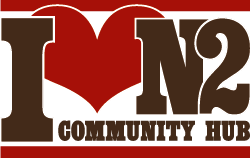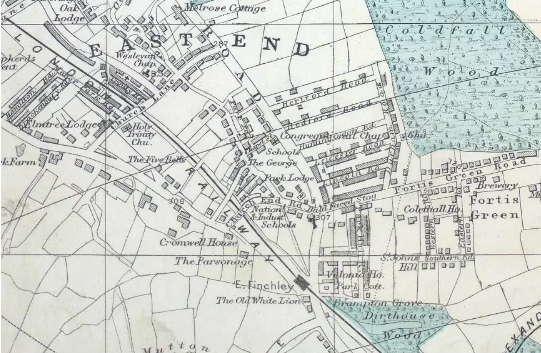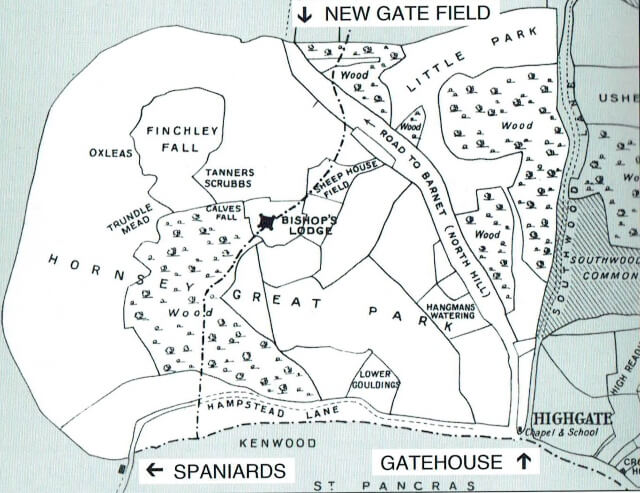Article by Tony Roberts, first published in The Archer, March 1998.
The question of East Finchley’s identity was brought into focus by the decision to designate the High Road shopping centre as East Finchley Village.
East Finchley started life in the Middle Ages as an extended village, a collection of small hamlets strung along the road called variously the Bishop’s Causeway and Manor Waie, and now East End Road. These settlements at present day Market Place (Hog Market, Park Gate), Church Lane (formerly Bulls Lane) and Red Lion Hill (formerly Cuckold’s Haven) were interconnected by a series of lanes and footpaths long since absorbed into the road system and were known collectively as East End.
In the 1800’s the static population started to grow. The posh bit expanded along East End Road and Fortis Green, while the less fashionable bit, with its seedy reputation for immorality and violence, grew around Market Place. The increase in population afforded independence for East End. East Finchley Parish was formed in 1846 with a new Parish Church on renamed Church Lane. Commensurate with its new status, the term East End was phased out, the railway station changing from East End to East Finchley in 1886. Administrative independence followed in 1899 when Finchley UDC was divided into 3 wards, East Finchley taking the part south of Strawberry Vale Brook, Squires Lane and the since disappeared Green Lane (formerly Workhouse Lane, Phillippa Lane). The railway bridge approach is just visible, south of the NCR.

The centre of population shifted eastward as Finchley Common was built over to form Chapel Street (disappeared), Park Hall Road, and the Counties estate, while the High Road, originally the village bypass, became an early example of a green-field shopping development! The original shops around Market Place no doubt complained, but to no avail, and have since disappeared. To cater for the eastward shift of population yet another parish was formed, based on All Saints, Durham Road.
Ironically, the original village centre of Market Place to Church Lane now lies outside the area designated as East Finchley Village, however it is commonly referred to as the “Old Village” in a nod to its more prosperous past.
Reproduced by kind permission East Finchley Newspapers CIC



